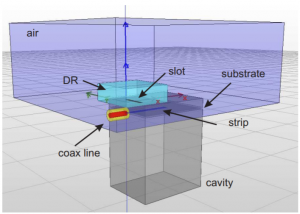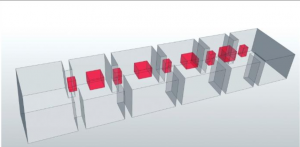Дополнительные материалы по программному обеспечению InventSim
An Efficient Framework For Fast Computer Aided Design of Microwave Circuits Based on the Higher-Order 3D Finite-Element Method
In this paper, an efficient computational framework for the full-wave design by optimization of complex microwave passive devices, such as antennas, filters, and multiplexers, is described. The framework consists of a computational engine, a 3D object modeler, and a graphical user interface. The computational engine, which is based on a finite element method with curvilinear higher-order tetrahedral elements, is coupled with built-in or external gradient-based optimization procedures. For speed, a model order reduction technique is used and the gradient computation is achieved by perturbation with geometry deformation, processed on the level of the individual mesh nodes. To maximize performance, the framework is targeted to multicore CPU architectures and its extended version can also use multiple GPUs. To illustrate the accuracy and high efficiency of the framework, we provide examples of simulations of a dielectric resonator antenna and full-wave design by optimization of two diplexers involving tens of unknowns, and show that the design can be completed within the duration of a few simulations using industry-standard FEM solvers. The accuracy of the design is confirmed by measurements.
Electromagnetic Simulation with 3D FEM for Design Automation in 5G Era
Electromagnetic simulation and electronic design automation (EDA) play an important role in the design of 5G antennas and radio chips. The simulation challenges include electromagnetic effects and long simulation time and this paper focuses on simulation software based on finite-element method (FEM). The state-of-the-art EDA software using novel computational techniques based on FEM can not only accelerate numerical analysis, but also enable optimization, sensitivity analysis and interactive design tuning based on rigorous electromagnetic model of a device. Several new techniques that help to mitigate the most challenging issues related to FEM based simulation are highlighted. In particular, methods for fast frequency sweep, mesh morphing and surrogate models for efficient optimization and manual design tuning are briefly described, and their efficiency is illustrated on examples involving a 5G multiple-input multiple-output (MIMO) antenna and filter. It is demonstrated that these new computational techniques enable significant reduction of time needed for design closure with the acceleration rates as large as tens or even over one hundred.
Больше статей на сайте InventSim

